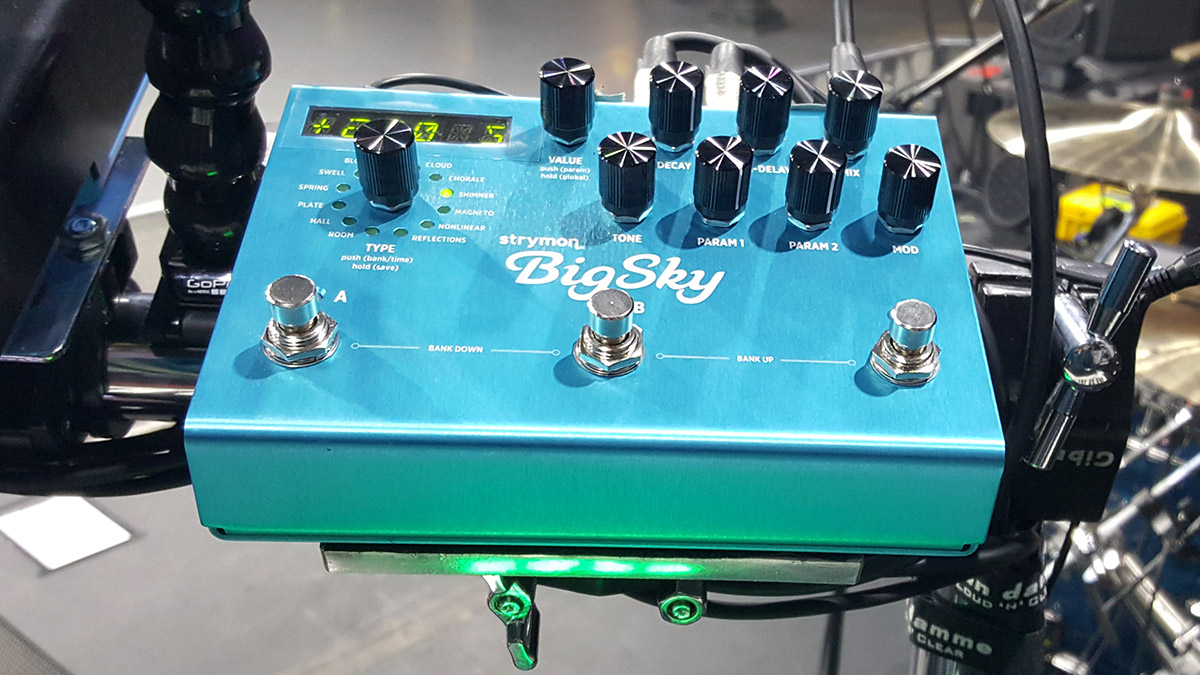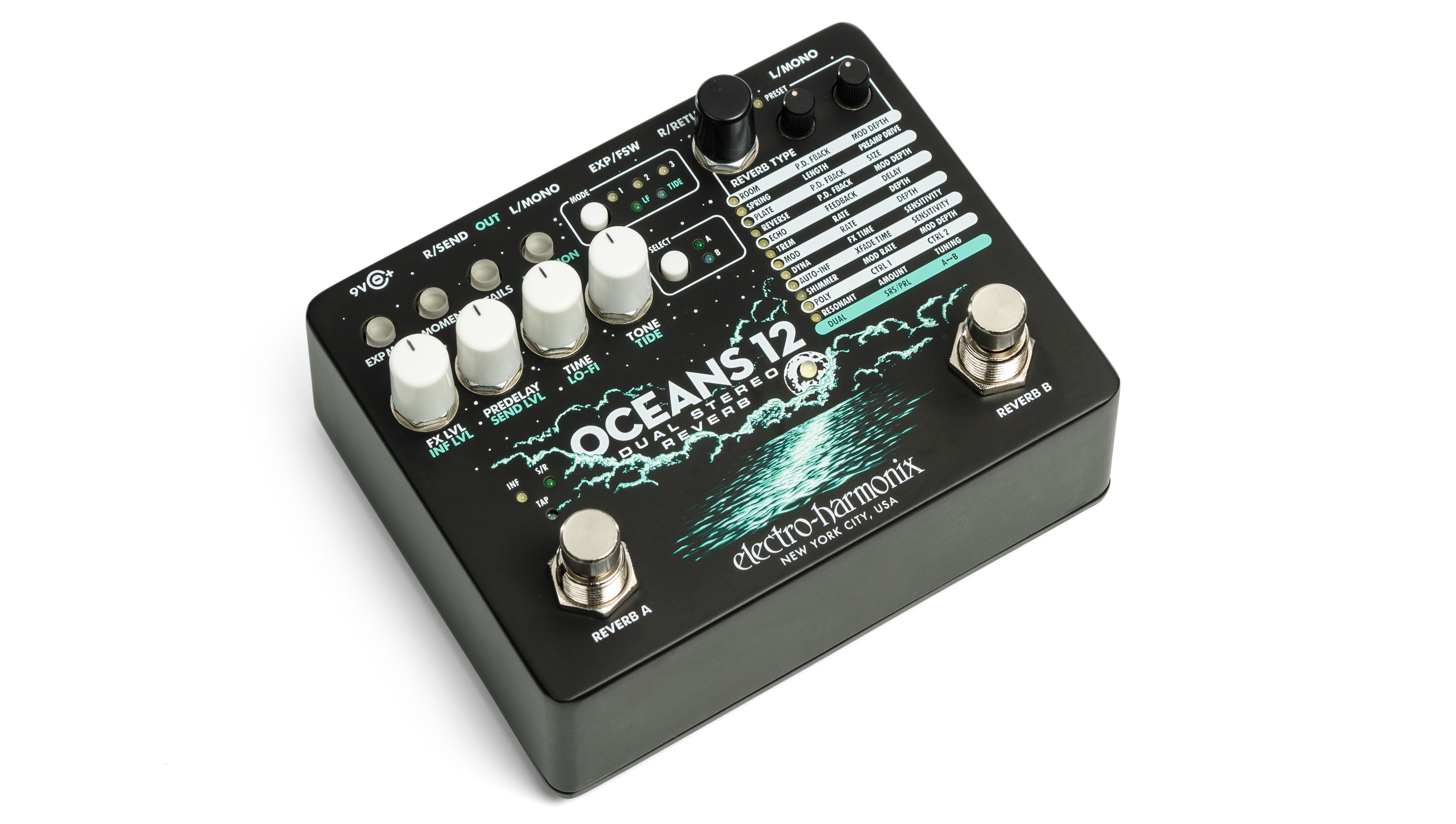If you thought Electro-Harmonix's Oceans 11 was its final word on reverb pedals, you're in for an eyebrow-raising surprise; the New Yorkers have upped the ante with the Oceans 12 Dual Stereo Reverb.
As the name suggests it's packing 12 different algorithms, but there's much more in that larger duel switch chassis.
The Oceans 12 features two simultaneous, independent, stereo reverb engines that can be used in series and parallel control modes. There's 24 presets and stereo in/out or mono send/return with pre and post reverb options. Plus a new secondary set of controls accessible via an A/B switch…

The Tide control allows for stereo image alteration and there's a Lo-fi control for adding texture and an infinite attenuation control.

The Oceans 12's Tails switch is especially useful; it provides the player with the choice between their reverb effect fading out naturally or stopping immediately as soon as the pedal is switched to bypass.
There's also the exciting prospect of combinations – EHX says that in 'most settings' the Oceans 12 is capable of producing infinite reverb that you can then play over with a different reverb effect. Think of the sonic potential!

Now for the even more important part; let's take a look at the full roll call of reverb for the Oceans 12:
Want all the hottest music and gear news, reviews, deals, features and more, direct to your inbox? Sign up here.
• Room – two modes: reverb algorithms modeled after a lively room and a spacious performance hall.
• Spring – two modes: vintage 1962 Fender® 6G15 tube reverb emulation and the spring algorithm from the EHX Holy Grail.
• Plate – two modes: two emulations of the smooth, metal plate reverb often used in high-end recording studios during the 1960s and ‘70s.
• Reverse – two modes: a reverse reverb effect as well as true reversed echoes.
• Echo – three modes: a digital delay with various echo rhythms feeding into a plate reverb.
• Trem – three modes: a classic, periodic volume envelope with various shapes applied to both the wet and dry mix of a hall reverb.
• Mod – three modes: combinations of chorus and flange reverbs that create rich reverb tails.
• Dyna – three dynamic, experimental reverb algorithms: swell, gate and duck
• Auto-Inf – three modes: auto-infinite reverb (w/optional chorus or flange) that “listens” to your playing and crossfades to a new reverb wash upon detection of newly struck notes.
• Shimmer – two modes: two configurations of a rich octave-shifted reverb wash
• Polyphonic – two modes: two configurable bi-directional pitch shifts that add dimensionality to the reverb tail.
• Resonant – two modes: reverb excited by tunable resonators and configurable self-oscillating filters on the reverb tail.
The Oceans 12 includes the standard EHX 9.6DC200mA power supply and will be shipping around the third week of March.
Head over to EHX.com for more info on its line of effects.

Rob is the Reviews Editor for GuitarWorld.com and MusicRadar guitars, so spends most of his waking hours (and beyond) thinking about and trying the latest gear while making sure our reviews team is giving you thorough and honest tests of it. He's worked for guitar mags and sites as a writer and editor for nearly 20 years but still winces at the thought of restringing anything with a Floyd Rose.